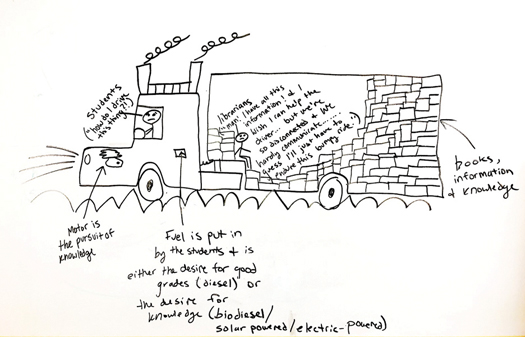Participatory Design in Action | The User Experience
Participatory Design (PD) is a method for engaging deeply with users in order to build inclusive, future-oriented, user-centered services. This year I piloted a PD project with a group of four Native American students at Montana State University (MSU) called User Experience with Underrepresented Populations (UXUP). With 650 enrolled Native students, comprising four percent of our student population, this is a growing and important user community for our library. In order to create more inclusive and user-centered services, we need to hear student voices, including Native voices.
We started UXUP to support and empower Native students on campus and explore different approaches to library UX design. Following in the tradition of the Florence project—an important early example of PD at the University of Oslo in the 1980s—UXUP called for all participants mutually to recognize expertise, share knowledge and power, and learn and create together. UXUP participants met twice weekly for design workshops that included interviews, usability testing, prototyping, journey mapping, and design games. Over the course of five months, we worked to build a shared understanding of the library and generate ideas about how it could be improved.

Gaming the system
In one exercise, called “Build Your Vehicle,” all participants drew a vehicle that represented our library. By applying the metaphor of a car, this exercise helped structure and guide our discussion. Participants were able to articulate a disconnect they felt between the library and themselves. We can see in the drawing (top center) that one student participant was stressed and navigating with uncertainty on a bumpy road. Yet the librarian, stuck in the back of the truck, is unable to help. This drawing helped our group focus on this key issue that students faced—feeling unsure and intimidated by the library. Following this insight, the students and I chose to concentrate on this issue.
We then played design games to help generate ideas for solving the problem. “Clockwise” is played as a brainstorming game. We first identified 12 different ways to address the issue of student disconnection, with each located around the face of a clock. We then rolled dice to pair two ideas together at random.
This design game helped us see different ideas from various angles, and after considering all of the combinations, our group agreed that the best course would be to develop a promotional poster series around the hashtag #MSULib101 that can serve to introduce students across campus to the library. The poster series would help connect students to the library by highlighting common library-related tasks. We then created poster prototypes. In one, we emphasize a reality for many first-time library users: the first step to using the library is finding the library.
The UXUP project concluded this summer with a digital poster series that will appear on displays campuswide in the fall term. We plan to follow up with an assessment initiative to help us determine the success of the series in terms of engaging students with library services and spaces.
Participatory Design OUTCOMES
By engaging deeply with users, PD can produce positive outcomes that are both pragmatic and political. Practically, PD can produce better products and better experiences for our diverse community. Politically, PD can bring in new voices and build new empathy, ideally leading to an inclusive and democratic process for decision-making about services. Put simply, participatory design gives us the tools to build our libraries for our users and with our users.
Through the UXUP project, the student participants have become expert library users, and their perspectives have been essential for producing the final product. Most important, their voices have found a new place in our library. The UXUP project has also helped me to advance my understanding of our campus’s Native American student community, allowing our library to serve this user population better in the future.
RELATED
ALREADY A SUBSCRIBER? LOG IN
We are currently offering this content for free. Sign up now to activate your personal profile, where you can save articles for future viewing









Add Comment :-
Comment Policy:
Comment should not be empty !!!